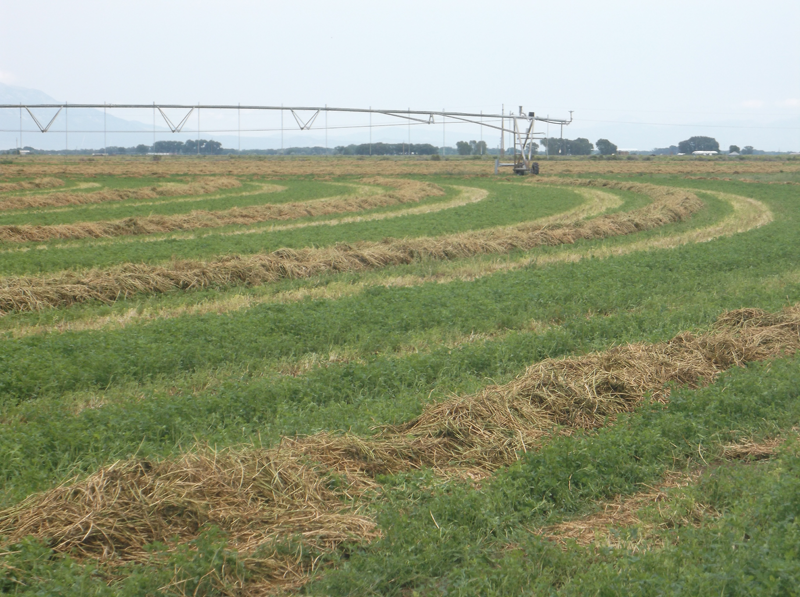Eye on Extension: Rain reduces hay quality

VALLEY — All across the San Luis Valley we see alfalfa or grass hay in windrows in the field. The recent rains have caused the hay to be in the field longer than hoped. The rain has colored the hay a darker brown color. Because of the rain the hay won’t be as high a quality as preferred.
Farmers have had to work around and between rain showers to bale or put up their hay. As the hay lies in the field and gets rained on it loses quality. Hay quality is often defined as the amount of energy and protein in the feed. Locally, producers try to produce high quality hay called “Dairy Quality Hay.” This is hay that has a high quality that dairies want to help their cows produce more milk. It is also used in feedlots for cattle or sheep.
Every year hay gets rained on after cutting, reducing the quality. If enough rain gets on the hay while in the windrow, the reduced quality hay can be called “Cow Hay.” This is hay that is usually fed to beef cows on the ranch because of the lower quality. Dairy quality hay also brings a higher price per ton than cow hay. Whatever the use, when feeding hay, the economics must be profitable enough to support the farm all year.
Also, the nutrients provided by the hay must match the needs of the animals being fed. If the hay won’t provide all the nutrients, then a feed supplement may be added. Supplements are more expensive than hay so feeding more hay is preferred when possible.
Since the quality of hay is so important to the price, having a forage analysis test on the hay is necessary to determine the actual energy and protein nutrient content of the hay. Submitting a good sample to a certified lab is necessary. Lab costs are mostly competitive with each other. However, I recommend checking with two or three labs on pricing and tests if you haven’t used a lab before.
When taking a hay sample for a lab, use a core sampler. Take cores from 10-20 bales. This helps get a good average of a field. Don’t mix more than one field in one test. Also don’t mix first cutting with second cutting. Each should be a separate sample.
When selecting a forage analysis start with a basic forage test. This is recommended for most producers. Many dairies want a test from a specific lab. They also want a test called a “Relative Feed Value” test. This test provides an analysis that is representative of the energy content of the hay. This test will often provide a report of the protein and some minerals as well. These additional nutrients aren’t part of the Relative Feed Value calculation.
The most common test is called the “Basic Forage” test. The basic forage test will provide information on the Crude Protein (CP), Acid Detergent Fiber (ADF), Total Digestible Nutrient (TDN) content, and Net Energy (NE).
Dairy producers will pay more attention to the Neutral Detergent Fiber (NDF) when balancing a ration for their cows. Hay producers need to know what type of test best fits the needs of the dairy and the quality of hay they have to sell.
Hay is never 100 percent dry. When you receive an analysis back from the lab it will have two columns. One is on an “as fed” basis and the other is “100 percent dry.” Both columns are used by the producer to determine how much hay needs to be fed each day. If moisture content is too high the hay can mold or increase storage losses. This is just a little of the thought process a hay producer goes through when raising hay.
For more information on producing hay, call the Colorado State University Extension, San Luis Valley Area Office at 719-852-7381.
Extension programs are available to all without discrimination, Colorado State University Extension, U.S. Department of Agriculture and Colorado counties cooperating.
MARVIN REYNOLDS is the Area Extension Director for the San Luis Valley Area.
Caption: Recent rains are affecting the quality of hay in fields across the San Luis Valley. Courtesy photo by Marvin Reynolds



